Fitness
The 13 Best Exercises To Lose Belly Fat & Slow Aging

As you grow older, your body begins to change quickly—and these changes are challenging to accept. Gaining extra girth around your belly, for instance, is far from the best feeling. After all, you want to live your best life—and look like it, too. An annual physical can be stressful just by stepping onto the scale. But there are some crucial tweaks you can make in your daily regimen to turn back the clock and slim down. We have some of the best exercises to lose belly fat and slow aging that trainers highly recommend adding to your routine.
Killing two birds with one stone always sounds appealing when it comes to maintaining your physical fitness and leading an overall healthy lifestyle. You’re likely aware of the benefits of staying fit as you age. You lose lean muscle mass and may experience health issues such as osteoporosis, osteoarthritis, and back pain as you get older, OrthoInfo reports. Regular physical activity can help strengthen your bones and lessen muscle and joint pain. So, we’re here to share some pretty stellar exercises that’ll help you lose belly fat and slow aging. What’s better than that?
Keep reading to learn more, and when you’re finished, be sure to check out these 11 Strength Exercises To Regain Muscle Mass as You Age.
Barbell Landmine Squats
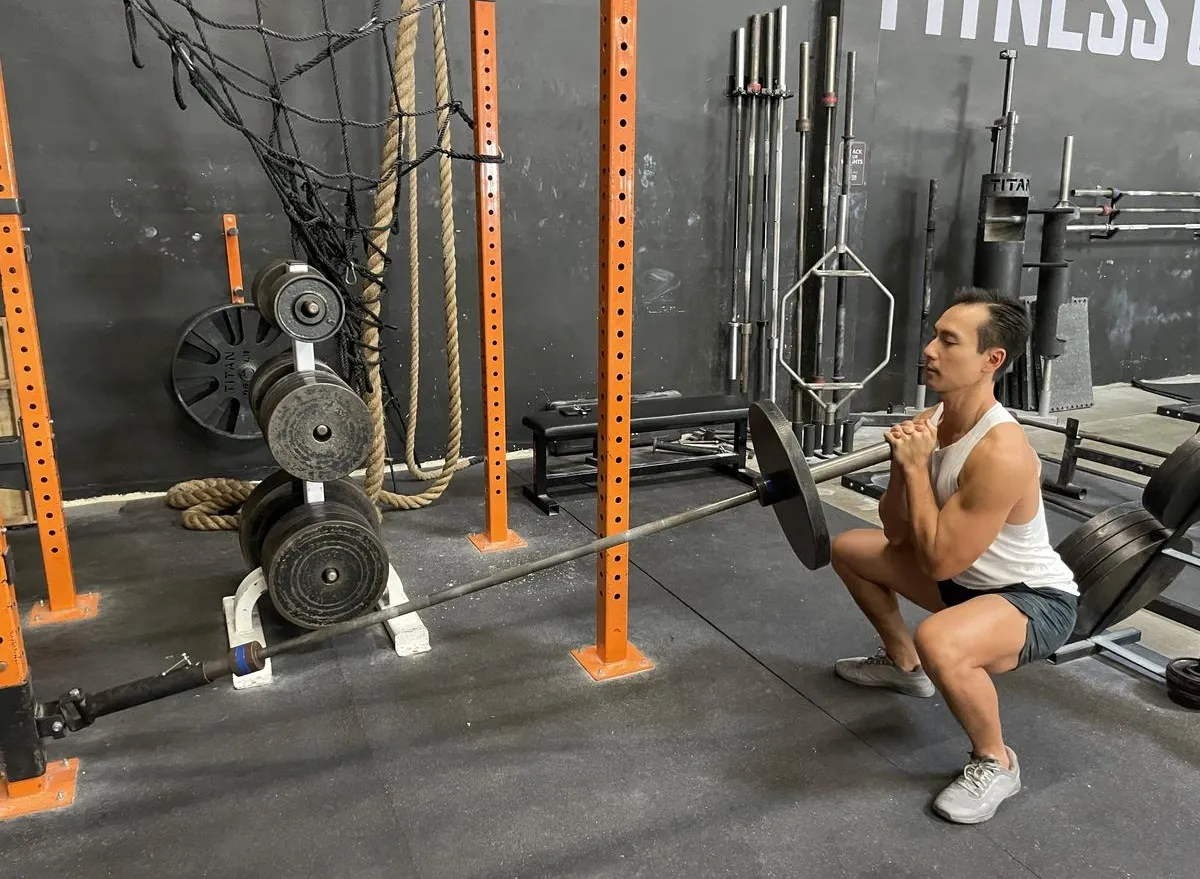
Ready to lose belly fat and slow down aging? Start this first exercise by positioning a barbell inside a landmine attachment. If you don’t have one, anchor the end of the barbell against a wall for the same effect. Pick up the barbell, and grip the end of it with both hands. Take a tiny step back. Keep your chest tall and your core tight. Lower into a squat by pushing your hips back and sitting down until your thighs are parallel to the floor. Drive through your heels to rise up, flexing your quads and glutes to finish. Perform three to four sets of 10 reps.
Chest-Supported Dumbbell Rows
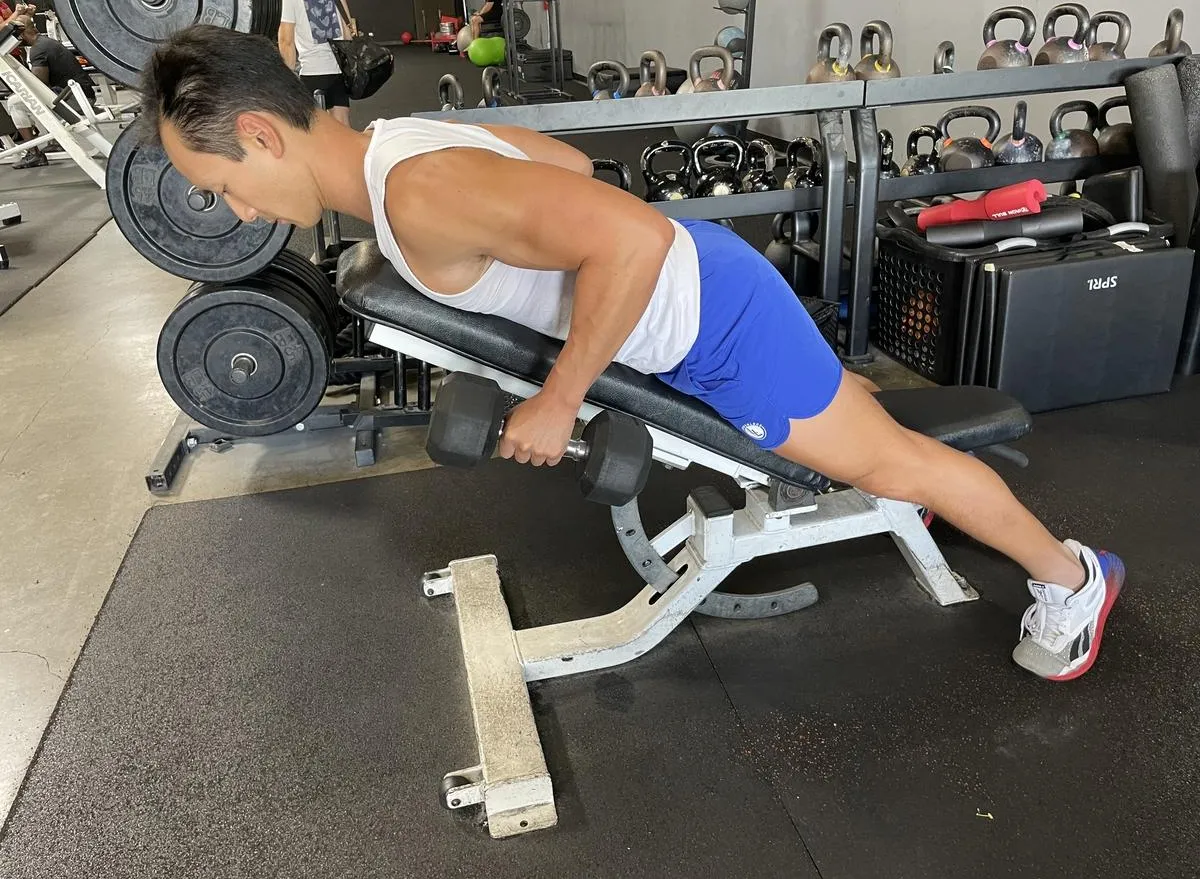

Adjust the bench to an incline (at least 30 to 45 degrees). Grab two dumbbells, position your chest on the pad, and keep your knees on the seat of the bench. Straighten your arms, and begin pulling the two dumbbells in with your elbows, squeezing your lats at the end of the motion. Lower the dumbbells down for the full stretch before the next rep. Perform three to four sets of 10 to 12 reps.
Barbell Split Squats (Between Legs)
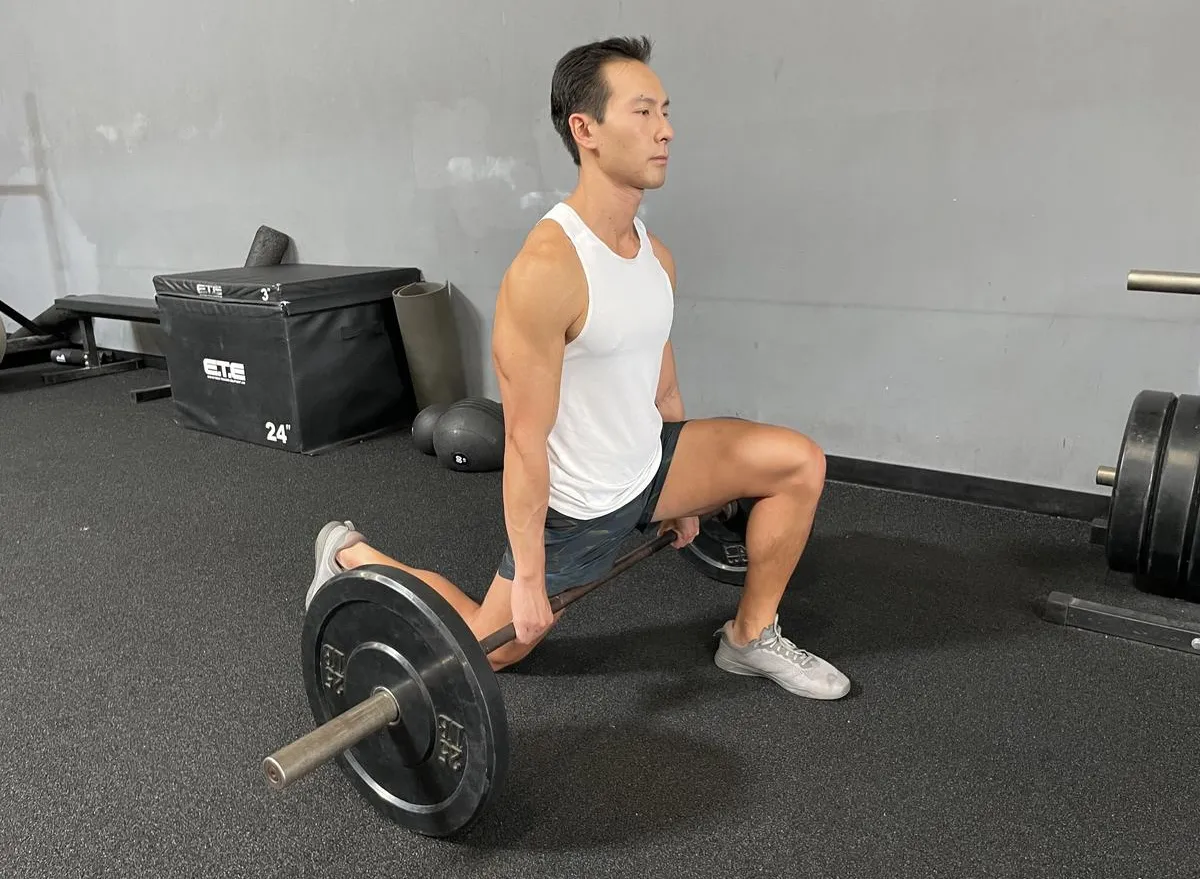

Assume a standard split squat position with a barbell between your legs. Keeping your chest tall and your core tight, squat down, reach down, and grab the bar with both your hands. Stand tall by driving through with the front heel of the leg, flexing your quad and glute to finish. Come down and all the way back up with each rep. Finish all reps on one side before switching over to the other. Perform three to four sets of 10 reps per leg.
Landmine Shoulder Press
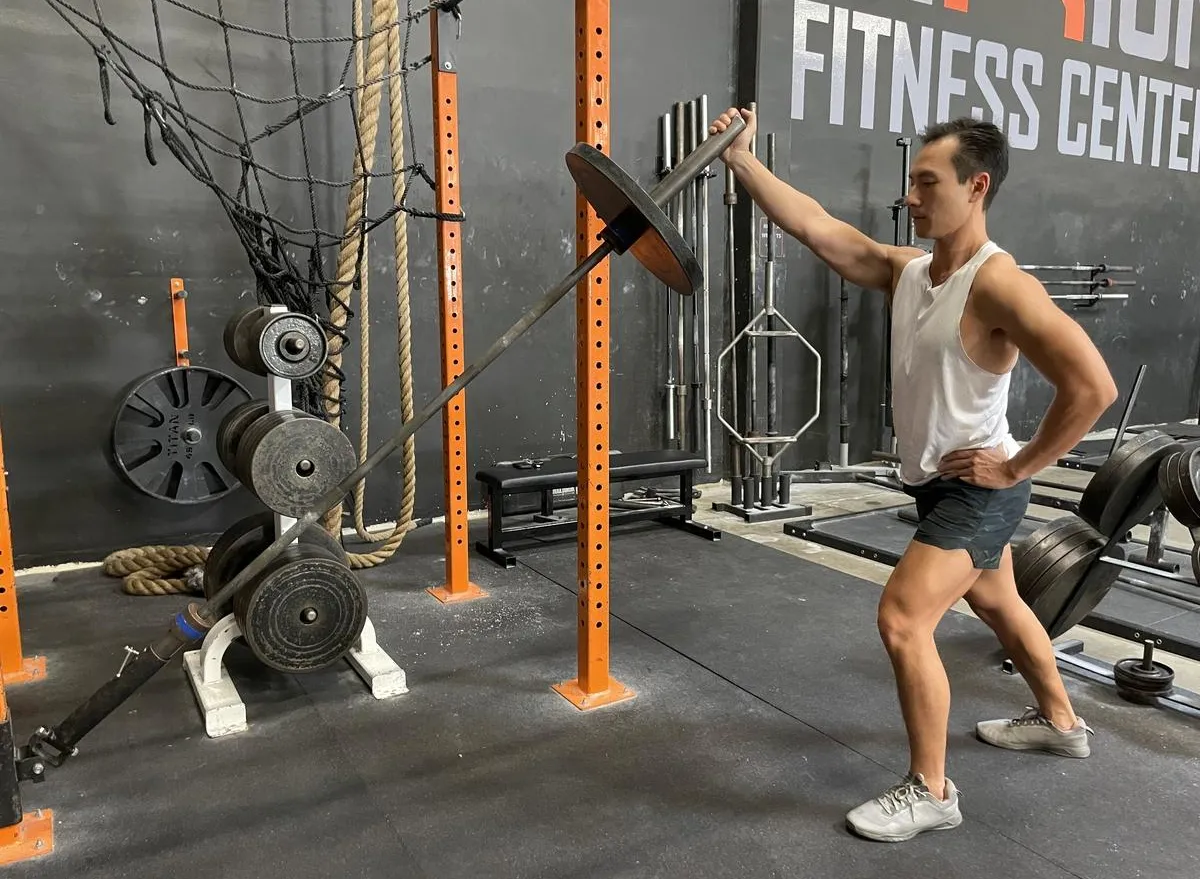

Place a barbell inside a landmine attachment. If you don’t have access to a landmine, stick a barbell to a corner of a wall to get the same effect. Assume a staggered stance with one foot forward and one foot back. Grab the bar, keeping your chest tall and your core tight, then press it forward. Flex your tricep and shoulder hard at the top, then bring the weight back to the starting position. Perform all reps on one side before switching over. Complete three to four sets of 10 reps for each arm.
Dumbbell Goblet Squats
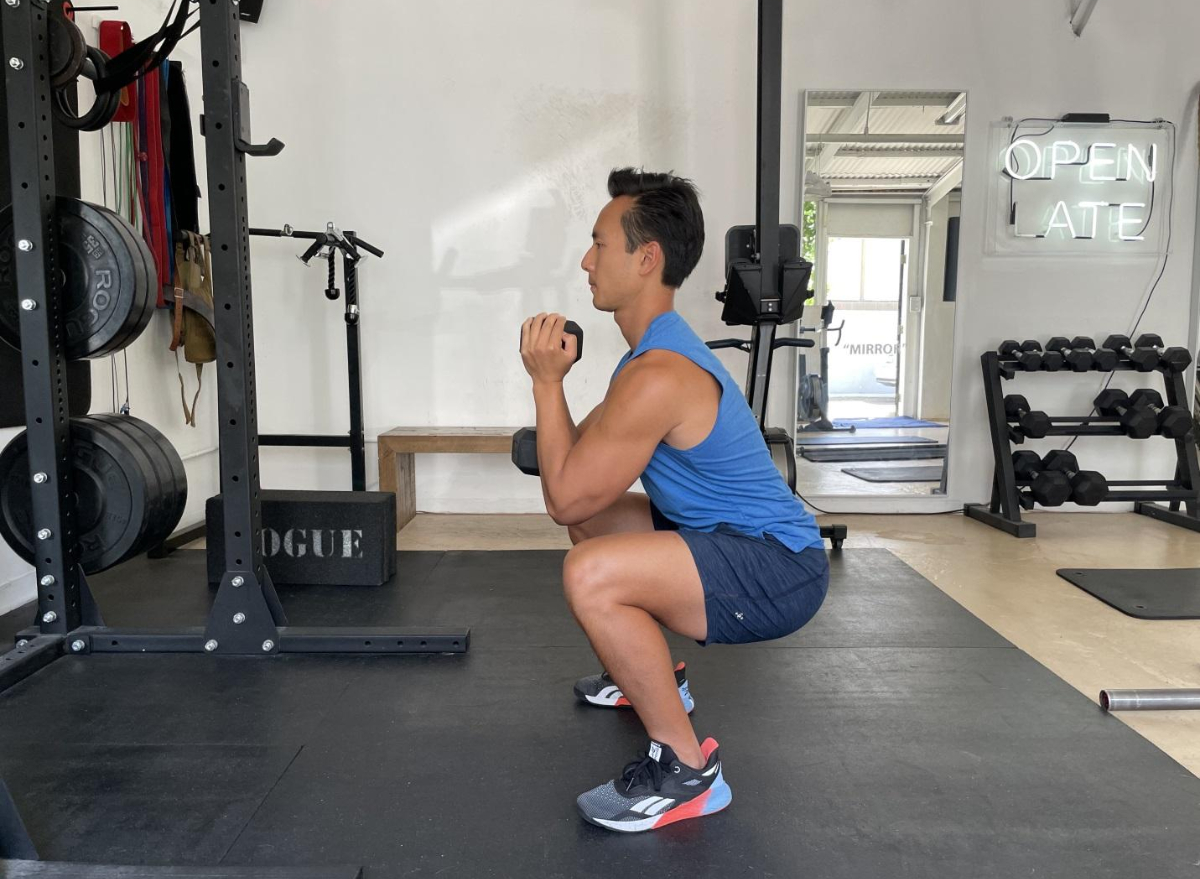

Vertically hold one dumbbell with both hands in front of your chest. Keep your core tight, push your hips back, and squat down until your thighs are parallel to the floor. Then, drive through your heels and hips to stand back up, flexing your quads and glutes to finish. Complete three sets of eight to 10 reps.
Barbell Romanian Deadlifts
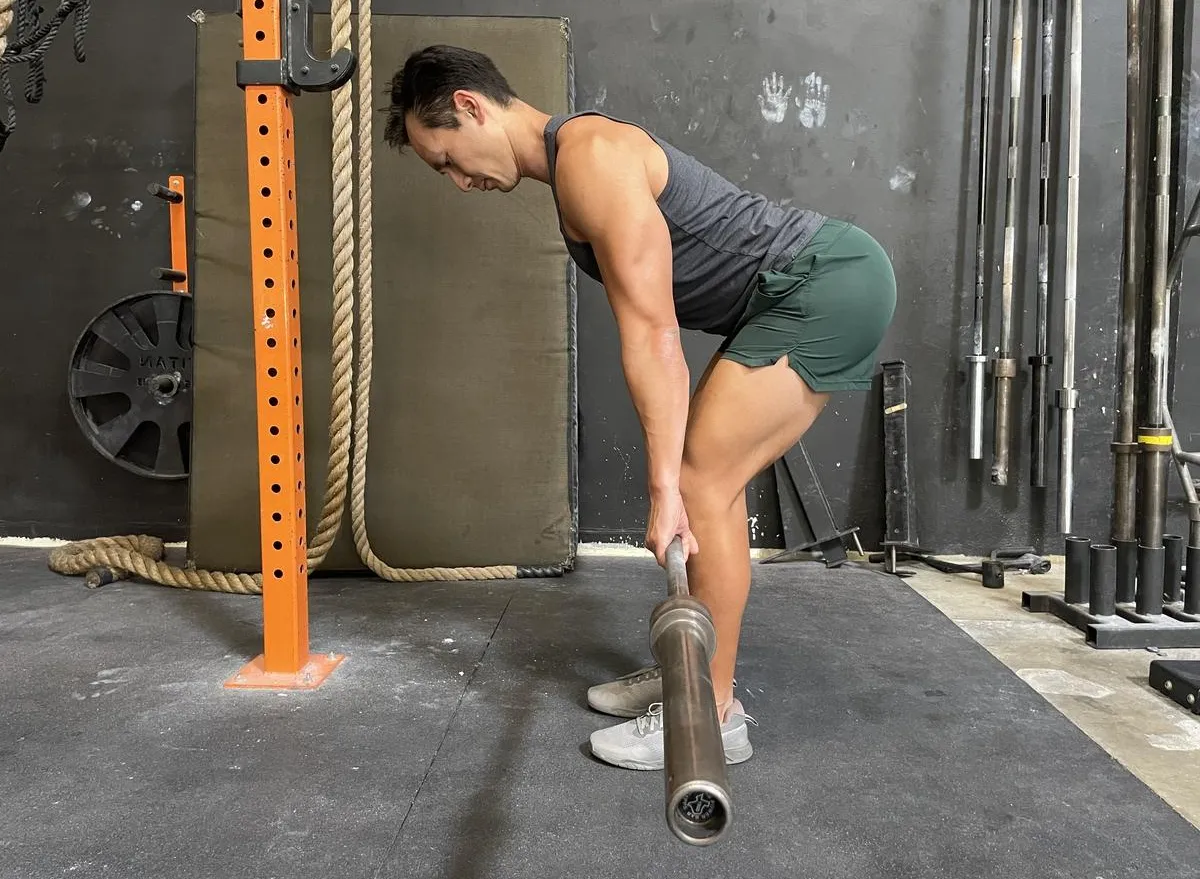

Grab a barbell, and position it right in front of your body. Keeping your chest tall and your knees soft, push your hips back while dragging the barbell down your thigh. Once you feel a solid hamstring stretch, drive your hips forward, squeezing your glutes to finish. Complete three sets of 10 to 12 reps.
Incline Dumbbell Bench Press
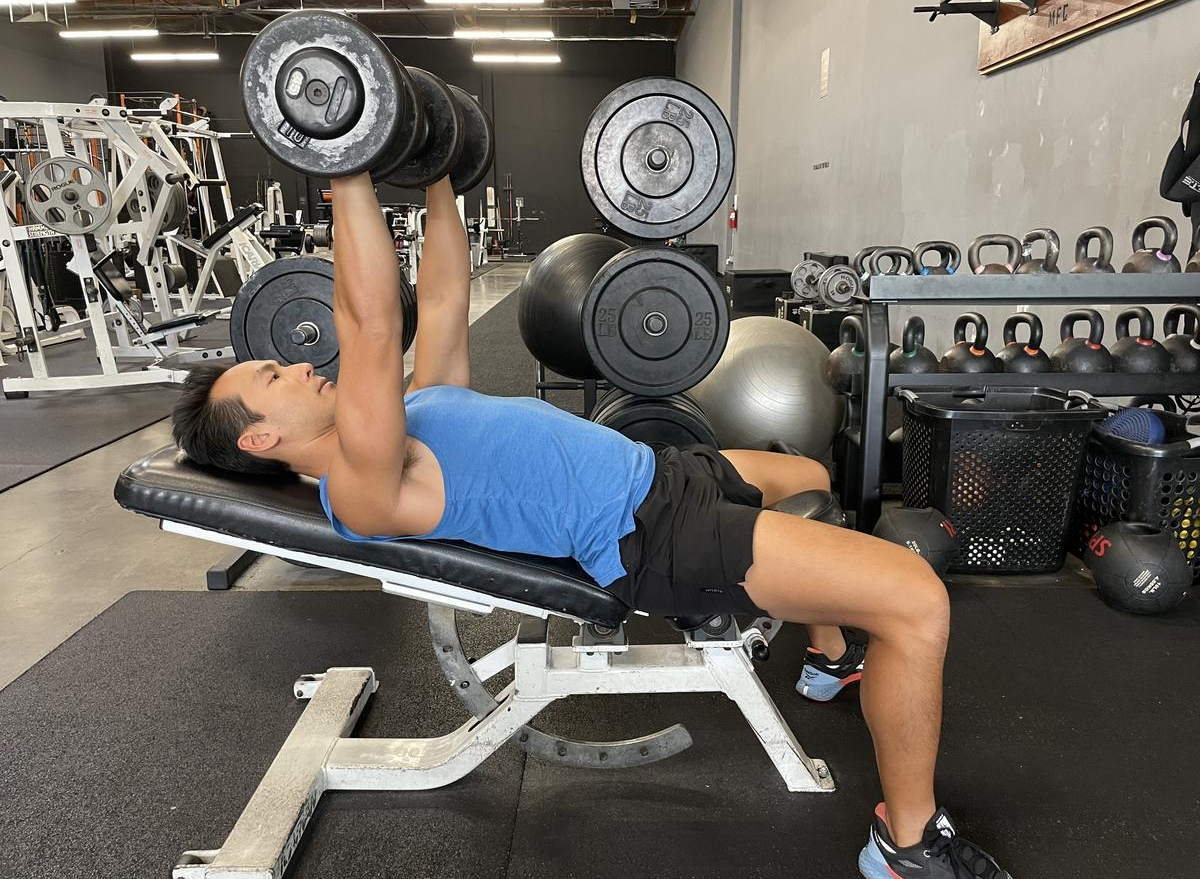

Lie down on an incline bench with a dumbbell in each hand. Hold the weights straight up above you with your arms fully extended. Pull your shoulder blades back and down onto the bench as you lower the weights toward your chest. Get a solid chest stretch at the bottom, then press the weights up to the starting position, squeezing your upper pecs and triceps at the top. Perform three sets of eight to 10 reps.
Cable Rows
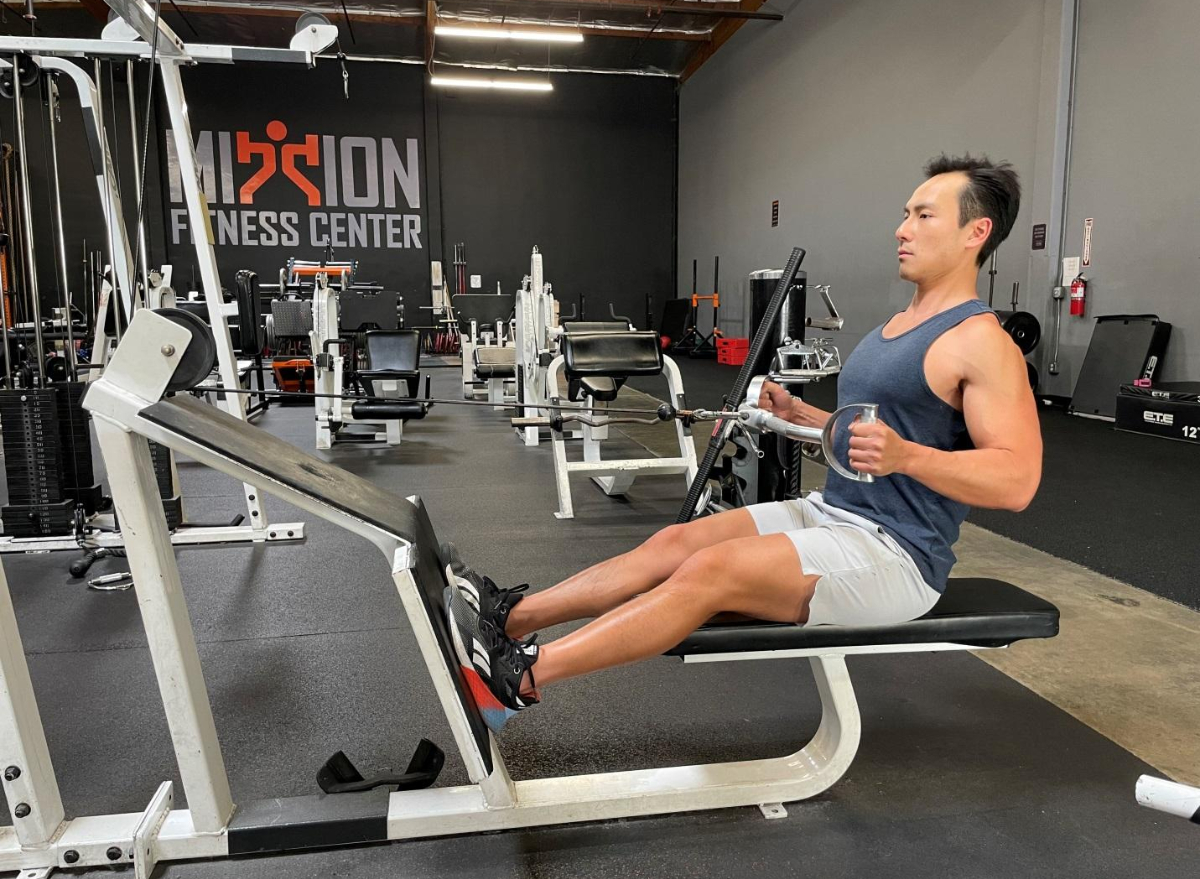

Grab the attachment on a seated row machine, and place your feet firmly on the footpad. Pull the handle out, then completely straighten your legs. Make sure your chest remains tall as you drive your elbows back to your hips, squeezing your back and lats hard to finish. Straighten your arms, and get a solid stretch in your shoulder blades before performing another rep. Perform three sets of 10 to 12 reps.
Dumbbell Reverse Lunges
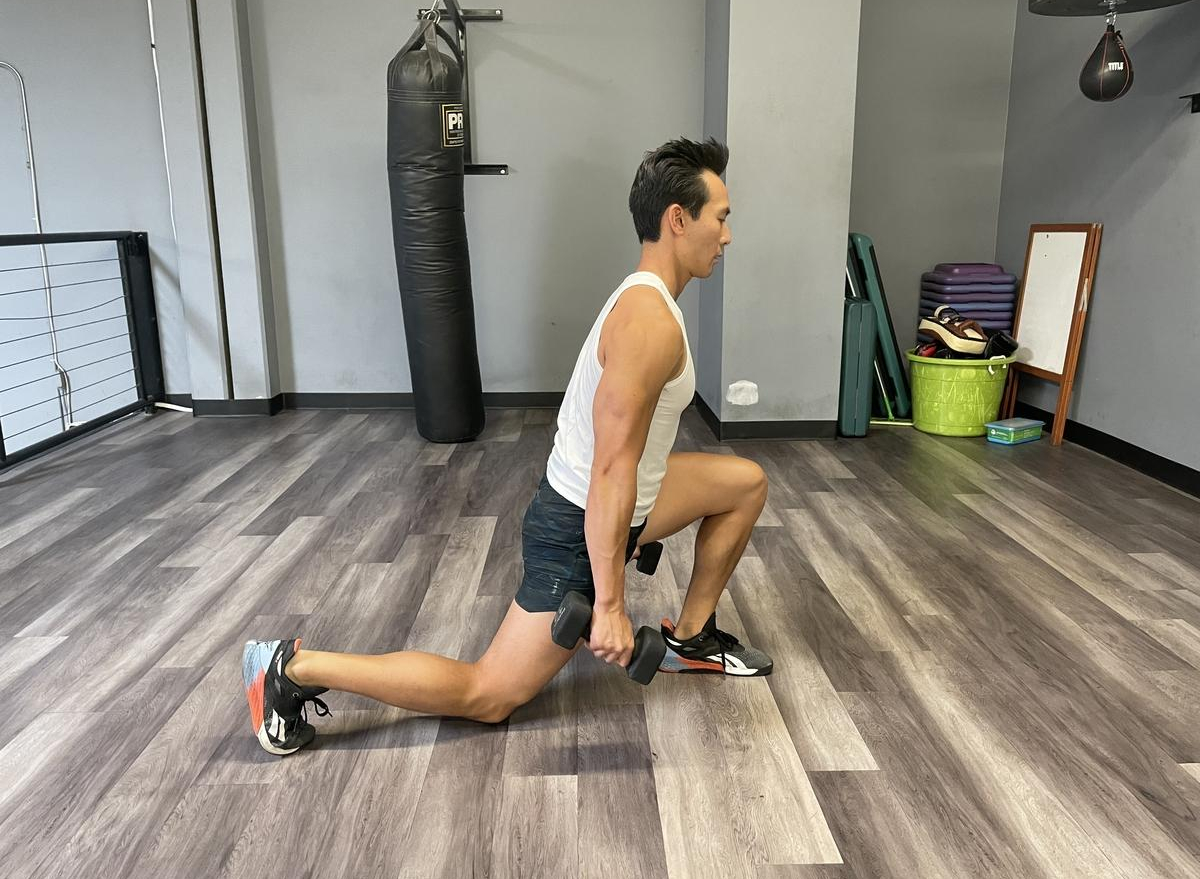

Hold a dumbbell in each hand. Take a long stride back with one leg. Firmly plant your heel down into the floor, then lower yourself until your back knee touches the ground. Push through with your front leg to come back up, then repeat with the other side. Complete three sets of 10 reps for each leg.
Incline Treadmill Walk
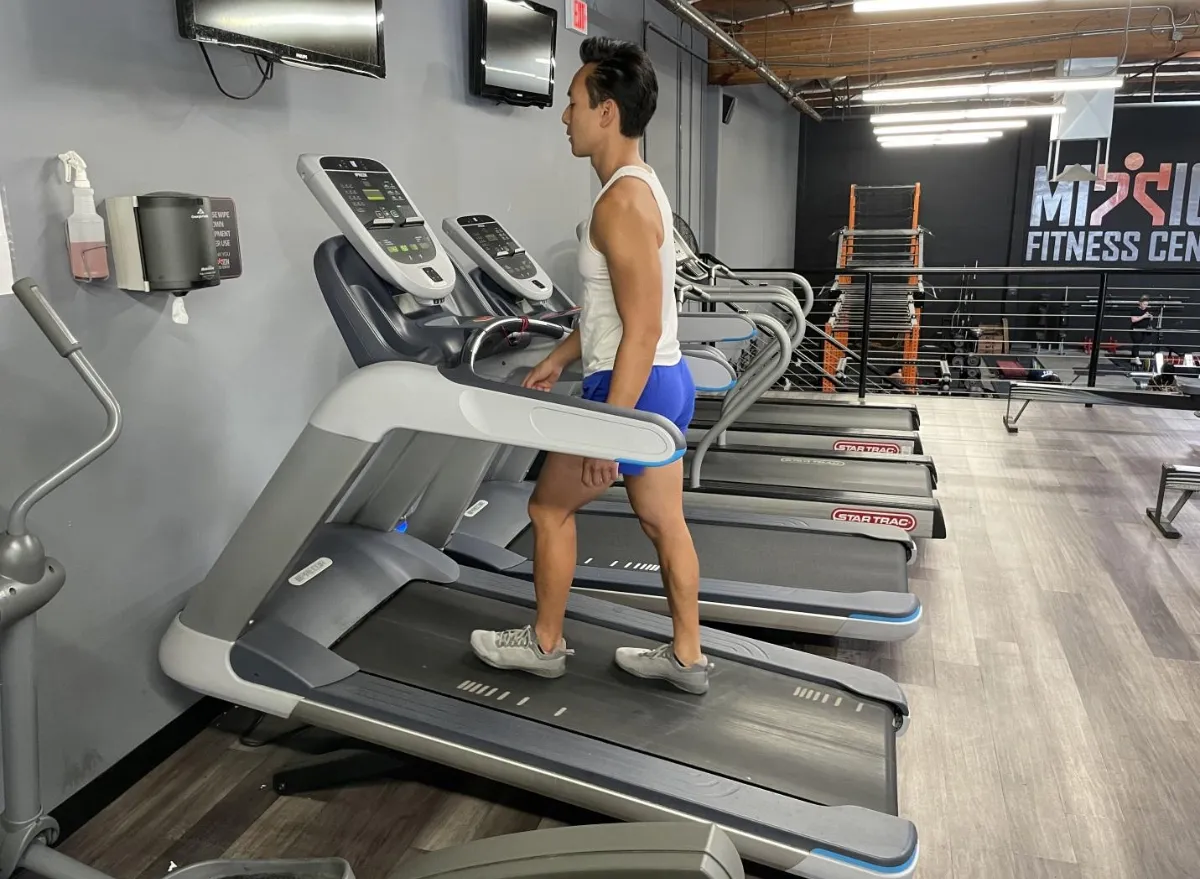

To perform this steady-state exercise, set your treadmill at the highest incline (usually 15 degrees), and set the speed at 2.5 to 3.5 mph. Walk at this pace and incline for at least 20 minutes, and watch your heart rate go up!
Climbing
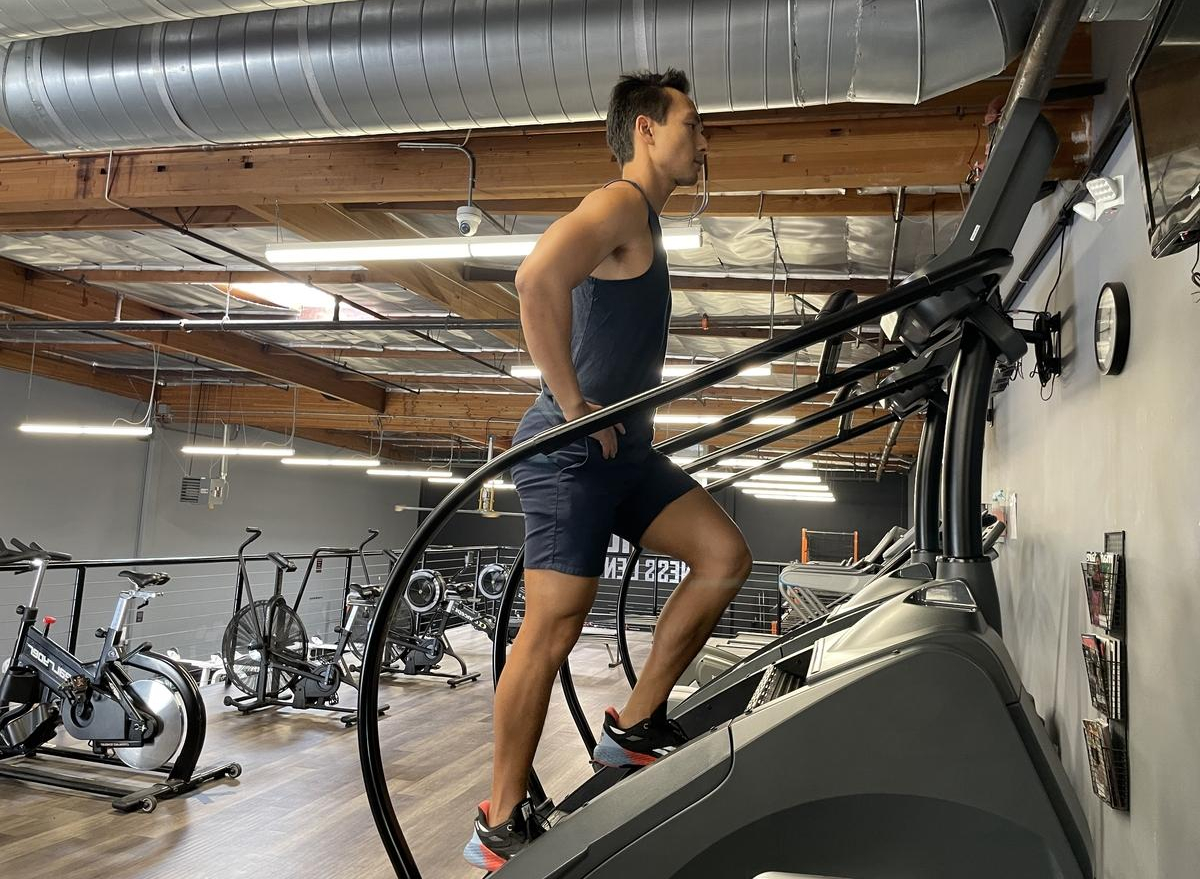

Begin climbing on the stair climber. If you’re a first-timer, go at a comfortable pace you’re able to maintain for at least 15 to 20 minutes. Once you build up more endurance (or if you’re a bit more of an intermediate level), crank up the speed, or climb for at least 30 minutes.
Incline Treadmill Runs
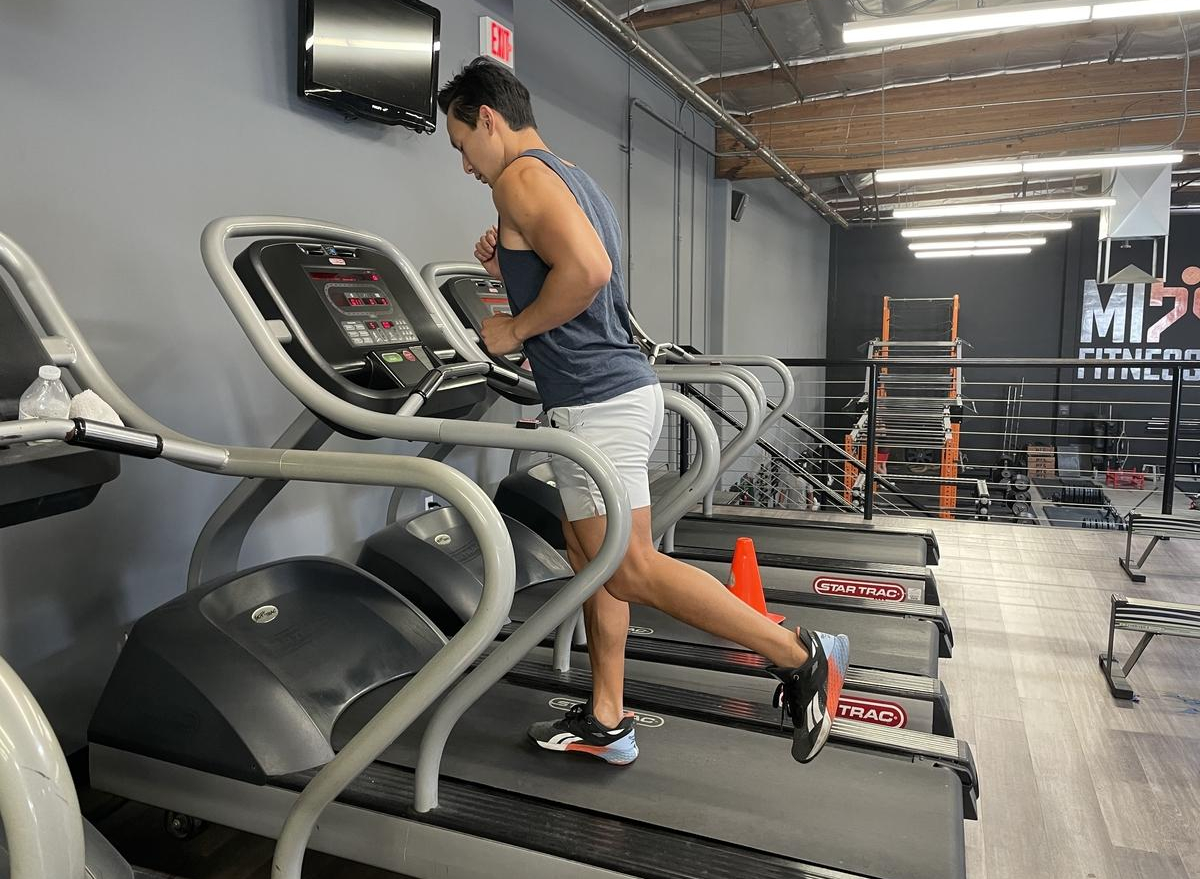

Stand with your legs outside of the belt. Set your treadmill to a 10% incline and the speed a little higher than your typical jog pace. Once the incline and speed are set, hop onto the belt, and sprint hard for 30 seconds. Once you sprint for 30 seconds, grab the handles on the side, and carefully jump back onto the stable non-moving part of the treadmill. Rest for 30 seconds, and then repeat this workout for 10 rounds.
Bike Sprints
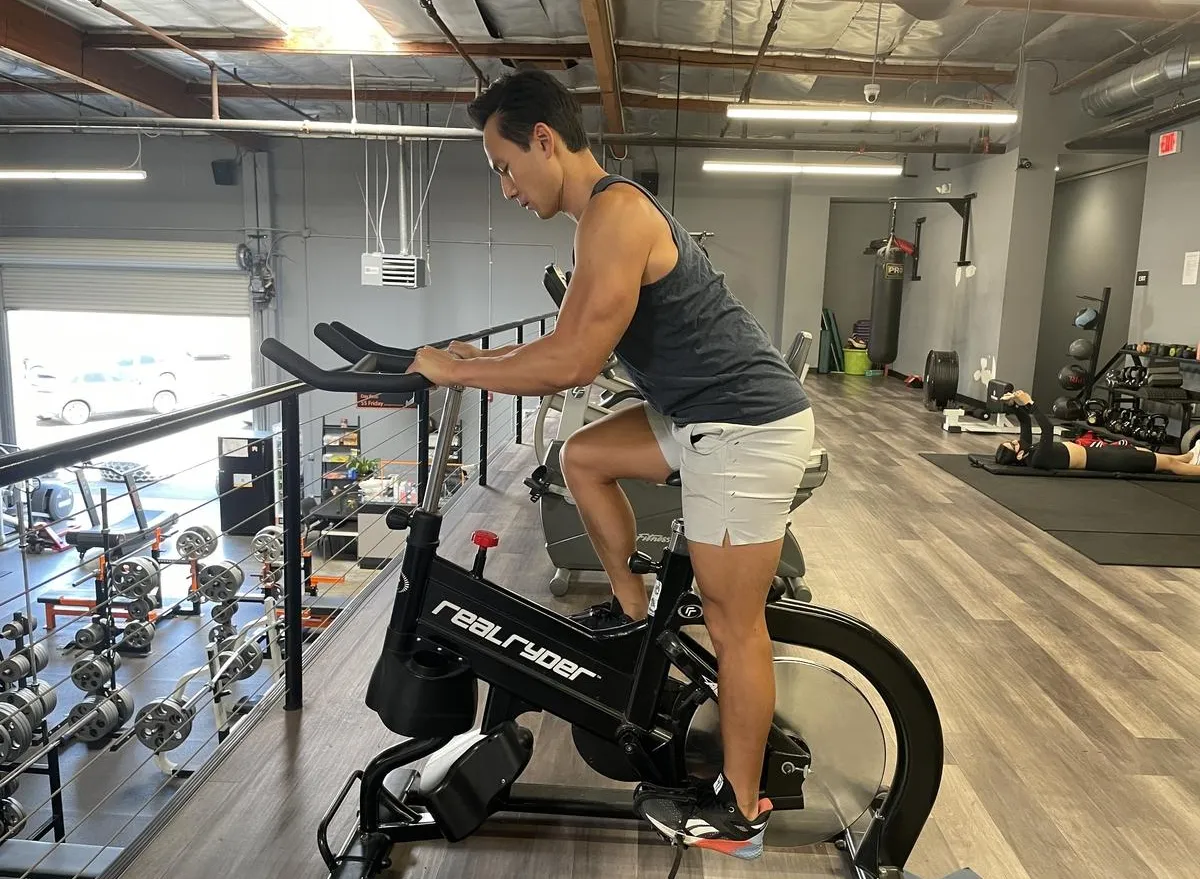

Hop on the exercise bike, and begin pedaling hard for 20 to 30 seconds. Once you sprint the prescribed amount of time, cruise at a slower pace for 30 to 45 seconds before sprinting again. Aim for eight to 10 rounds total.

Fitness
How to get started at the gym – and keep going

It’s important to have goals in mind as you set out on your fitness journey, whether you’re trying to lose weight, gain muscle or train for a race.skynesher/Supplied
January is notoriously the busiest time of year at the gym. A survey from Ipsos reported that a third of Canadians made exercise-based resolutions for the new year, with many folks working out for the first time or returning to fitness after some time away. If you’re new to exercise, the gym can feel like an intimidating place. But it doesn’t need to be. Below we’ve put together a few suggestions to help you get started.
Have a plan going in
For success at the gym, it’s crucial to have a plan. Before you start, it’s important to identify your goals. Are you looking to get stronger? Training for a race or competition? Do you want to improve body composition? While almost any consistent exercise is going to improve your overall health, specific results require specific training.
Following a workout program can help you stay committed – here’s how to write your own
Those completely new to working out may want to invest in a few sessions with a personal trainer. A reputable trainer will be able to put together a plan based on your preferences and skill level, while walking you through the proper form for each exercise. If cost is an issue, many gyms offer a free intro training session as a sign-up perk. There are also hundreds of different workout programs you can find online and video tutorials outlining proper form.
If you’re intimidated to exercise on your own, a fitness class allows you to follow along with an instructor while getting some quick pointers on how to properly perform the workout. Many gyms offer discounted or free classes to first-time visitors.
Trying to do too much, too fast will burn you out, leave you injured or both
When you’re motivated by a new year’s resolution, it’s tempting to pencil in long gym sessions multiple times a week. But that kind of regime is rarely sustainable. If you’d like to make exercising a habit beyond January – and you’ll need to for any kind of lasting results – it’s best to think about what you can do in the long term.
“You can either do an hour of weightlifting a few days a week, and actually do it, or you have these imaginary 10-hour training sessions you’ll never actually have time for,” said Dan John, strength coach and author. “I try to focus on [programs that are] doable, repeatable and reasonable.”
Want to focus on healthy aging in 2026? Here are 10 nutrition tips to start the new year
Similarly, trying to immediately push beyond your physical limitations is a great way to get injured. For weightlifting, it’s important to consider proper warm-ups, active mobility exercises and learning the right techniques before trying to lift anything too heavy. For cardio, Canada Running Series offers a Couch to 5K plan that eases newcomers into jogging by starting small and gradually increasing the length/difficulty of each run.
Follow basic gym etiquette
The gym is a shared public space. Everyone there is trying to get in a good workout. That’s harder to do when people are having phone conversations, listening to videos without using headphones and refusing to wipe down their equipment after use.
In March, fitness trainer Paul Landini wrote an article explaining some unofficial rules to follow when going to the gym, including being mindful of other people’s space and making sure you’re not monopolizing equipment during busy hours.
Try to find what you like about the gym
Changes in body composition, strength and overall health take time. They also need upkeep over the long term. Building a consistent fitness habit is something that will help with all those goals. One of the best ways to do that is finding something at the gym you genuinely enjoy doing. That can be working out with a friend to add a social aspect to exercise and accountability to show up. It can entail learning a new fitness-adjacent skill such as boxing or training for a competition like Hyrox. It can be rooted in the sense of accomplishment that comes with getting stronger. Whatever the reason, finding the joy in exercise is going to be key if you want to move beyond short-term motivation.
Fitness
New workout makes fitness more accessible for moms

SIOUX FALLS, S.D. (Dakota News Now) – Finding time to work out as a mom with young kids can be a challenge in itself, especially when you’re new to an area and don’t know where to start. However, a new fitness option strolled into Sioux Falls today. iStroll offers moms the chance to work out and meet other moms all while their kids can play or even join alongside them.
iStroll is a national organization that has more than 35 locations in the country but this is the first time one opened in South Dakota. It’s a full body workout that incorporates dumbbells, body weight, and jogging strollers when the weather’s nice.
“I found iStroll in Oklahoma and fell in love,” said Kelsi Supek who started the affiliate in Sioux Falls. “We made friends. It became our entire social network. The kids loved it and then we moved to Arizona during COVID. And all the moms were stuck at home. They were inside with our kids and lonely, honestly. And we were like, why can’t we start an iStroll and be out at the parks with the kids every day? And it took off.”
When Supek moved to Sioux Falls, she was encouraged by her family to start an affiliate and own it herself.
“Gym daycares did not work out for my children,” said Supek. “I would get 10 minutes into a class and then I’d have that person trying to knock outside the yoga studio going, Can I have Kelsey and her kids screaming in daycare? And it just didn’t work for us. So at iStroll they could be with me or I could be breastfeeding the baby as I was teaching in class.”
Classes are planned to continue each Wednesday and Friday at We Rock the Spectrum and First Presbyterian Church. For a full schedule for January and February, you can look at their Facebook. The first class is also free and memberships are for the whole family.
“Letting the kids see you work out is, it’s similar to homeschooling where like, you know, how are they going to love working out if they don’t see you working out,” said Kelly Jardeleza, a stay-at-home mom of three kids. “Whereas at other gyms they put them in a room and they don’t get to watch you. And how are you going to inspire them if they’re not watching you do it?”
Copyright 2026 Dakota News Now. All rights reserved.
Fitness
Share your health and fitness questions for Devi Sridhar, Mariella Frostrup, and Joel Snape

There’s no bad time to take a more active interest in your health, but the new year, for lots of us, feels like a fresh start. Maybe you’re planning to sign up for a 10k or finally have a go at bouldering, eat a bit better or learn to swing a kettlebell. Maybe you want to keep up with your grandkids — or just be a little bit more physically prepared for whatever life throws at you.
To help things along, Guardian Live invites you to a special event with public health expert Devi Sridhar, journalist and author Mariella Frostrup, and health and fitness columnist Joel Snape. They’ll be joining the Guardian’s Today in Focus presenter Annie Kelly to discuss simple, actionable ways to stay fit and healthy as you move through the second half of life: whether that means staying strong and mobile or stressing less and sleeping better.
To make the whole event as helpful as possible, we’d love to hear from you about what you find most challenging — or confusing — when it comes to health and exercise. What should you actually be eating, and how are you going to find the time to make it? What sort of exercise is best, and how often should you be doing it? Is Pilates worth the effort — and should we really all be drinking mugfuls of piping hot creatine?
Whether your question is about exercise, eating, or general wellness, post it below and we’ll put a selection to our panel on the night.
Share your experience
You can post your question to the panel using this form.
If you’re having trouble using the form, click here. Read terms of service here and privacy policy here.
-

 Detroit, MI5 days ago
Detroit, MI5 days ago2 hospitalized after shooting on Lodge Freeway in Detroit
-

 Technology2 days ago
Technology2 days agoPower bank feature creep is out of control
-

 Dallas, TX4 days ago
Dallas, TX4 days agoDefensive coordinator candidates who could improve Cowboys’ brutal secondary in 2026
-

 Health4 days ago
Health4 days agoViral New Year reset routine is helping people adopt healthier habits
-

 Nebraska2 days ago
Nebraska2 days agoOregon State LB transfer Dexter Foster commits to Nebraska
-

 Iowa2 days ago
Iowa2 days agoPat McAfee praises Audi Crooks, plays hype song for Iowa State star
-

 Nebraska2 days ago
Nebraska2 days agoNebraska-based pizza chain Godfather’s Pizza is set to open a new location in Queen Creek
-

 Entertainment1 day ago
Entertainment1 day agoSpotify digs in on podcasts with new Hollywood studios
























